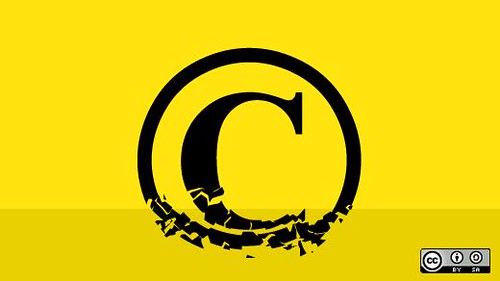“Keep in mind that in the whole long tradition of storytelling, from Greek myths through Shakespeare through King Arthur and Robin Hood, this whole notion that you can’t tell stories about certain characters because someone else owns them is a very modern one – and to my mind, a very strange one.”
― Michael Montoure, Slices
We might just be teaching copyright wrong. Even those who regularly talk to their students about the importance of fair use, citing sources, and linking to original content are still missing the big ideas. They are still looking at copyright from a consumption model.
Salt-worthy teachers are talking to students about things like Creative Commons and explaining what it means when a content creator claims a specific kind of copyright for a given piece of work.
The boat we too often miss, though, is asking kids how they want to license the things they create. As the quality of what students can do with the tools in their hands increases, students are making things that have worth standalong projects or increased remixing and hacking potential.
If this is true, and the stuff that’s coming out of classrooms is high-quality, we owe it to our kids to ask them who they want to be as content producers and how they want the rest of the world to access their work.
For students blithely torrenting movies and other content from the web, the conversation can become quite different when asked if they want to freely release something they’ve spent time and energy creating. Do they want credit for their work? Do they want compensation?
Perhaps we are mum on this topic because we are worried about hte complicated possibilities of opening up the choices and opportunities that could arise if students start thinking about how they own their work.
Student A releases a report into the public domain. Student B realizes they can pull entire swaths of that report without being legally compelled to cite the source material. What, now, constitutes cheating? Plagiarism? Intellectual property?
This question and others like it are all the ways we should be introducing and learning copyright with our students. It’s ineffective and out-of-touch to teach only a consumption model of copyright. It ignores the productive, creative, prodigious work being done in our classrooms.
What kind of publishing do students want to perpetuate? How do they want to release their work into the wild? What is the difference between the access they want to provide others to their work and what access they expect to the work of others. Above all else, why?

